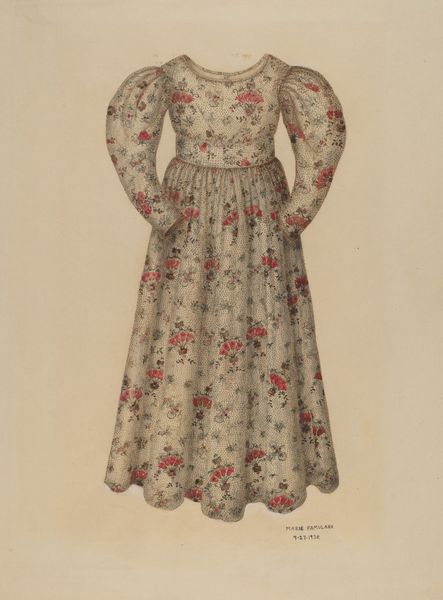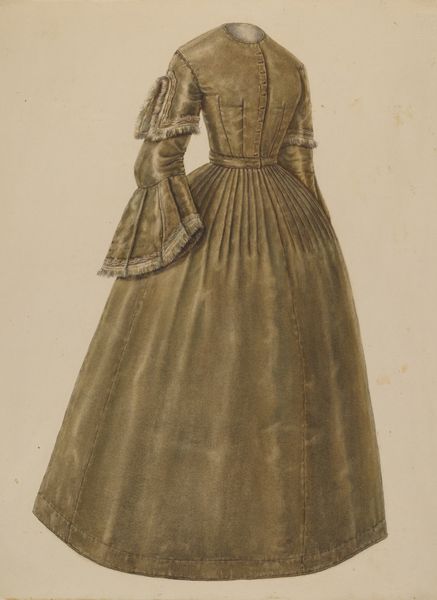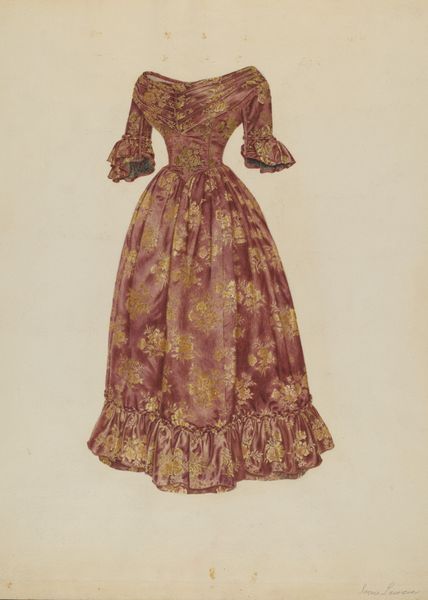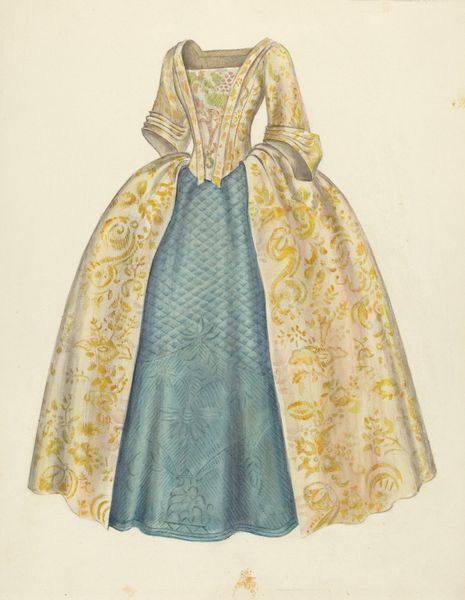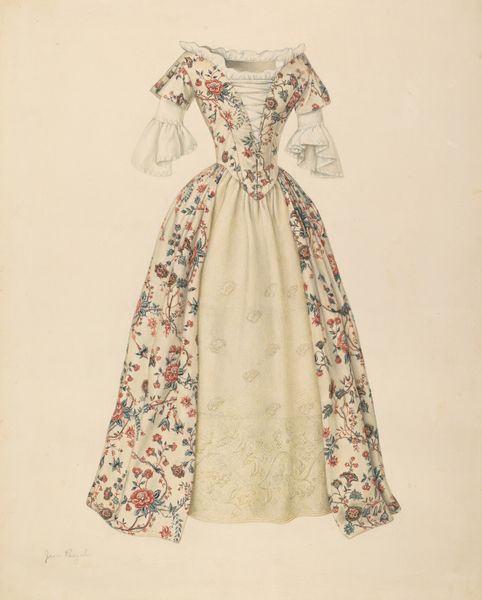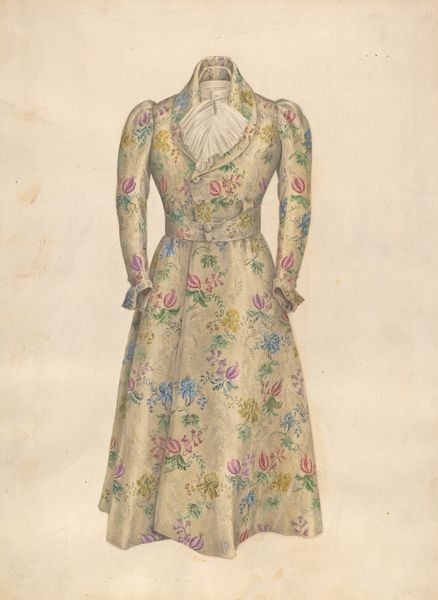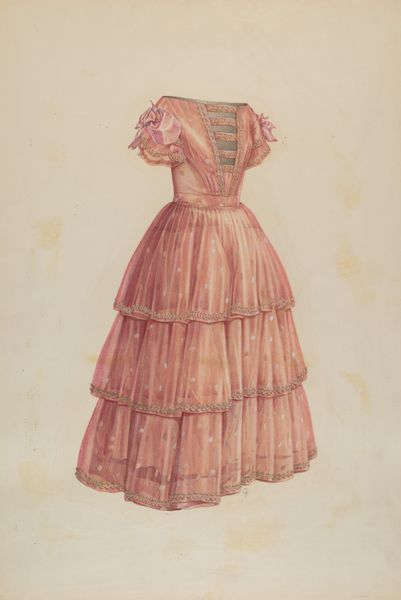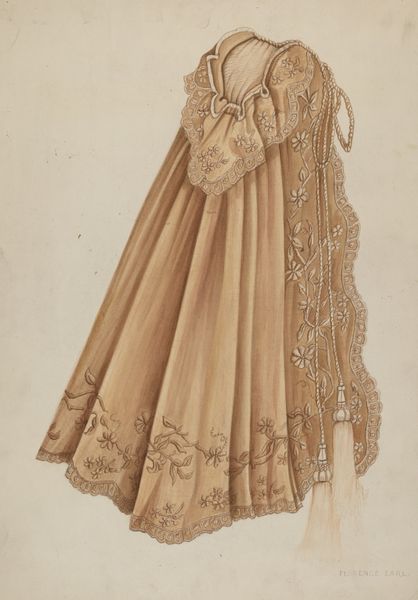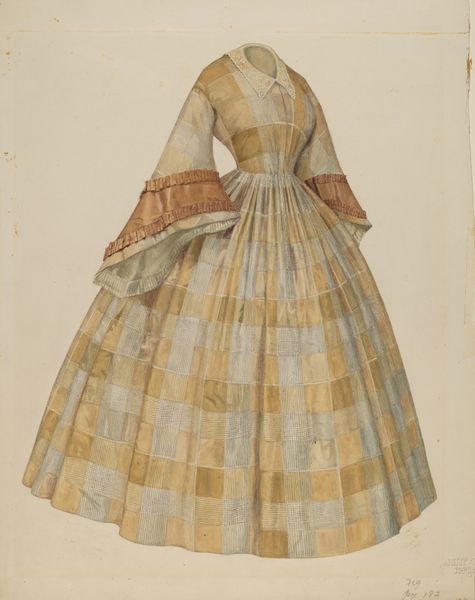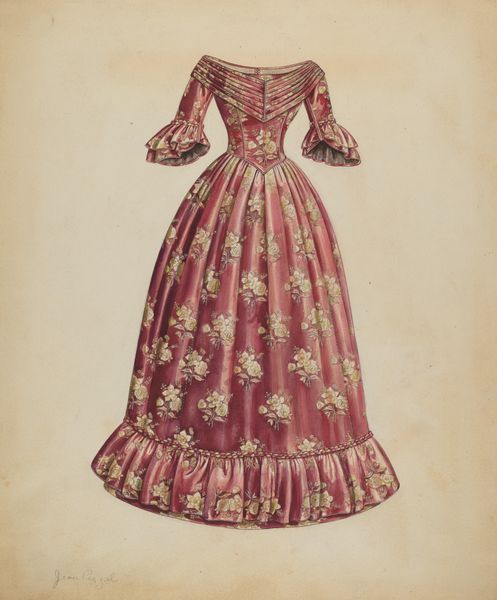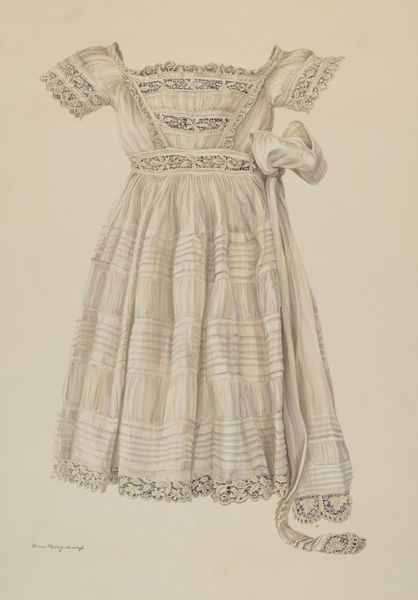
drawing, coloured-pencil
#
portrait
#
drawing
#
coloured-pencil
#
figuration
#
coloured pencil
#
folk-art
#
portrait drawing
Dimensions: overall: 35.4 x 24.5 cm (13 15/16 x 9 5/8 in.) Original IAD Object: 25 1/4" high
Copyright: National Gallery of Art: CC0 1.0
Curator: Oh, look at this! It's a work by Helen Bronson from around 1937. She calls it, simply, "Doll." It's rendered with such delicate colored pencil work. What strikes you first about it? Editor: It feels haunted, almost. The colors are faded, like a forgotten photograph, but there's something very deliberate about the doll's dress pattern and how rigidly its limbs are composed. It feels both innocent and deeply unsettling. Curator: Indeed. I think there's a fascinating commentary here on the commodification of childhood, and how even the objects meant to be cherished are produced with a particular cultural framework and intention. This colored pencil drawing mimics and reflects that idea of manufactured tenderness through the drawn doll itself. Look closely at the dress: clearly mass-produced, meant for many dolls. Editor: The patterned fabric feels central, almost a readymade that Bronson has repurposed here in drawn form. What type of industry churned that out? Did these dolls exist ready-made, or were they homemade with scraps of textiles? That, I think, informs the class dimension of childhood on display here. The artist meticulously recreates it as a drawing and asks these questions too, of course. Curator: Precisely. There’s a sort of eerie formalism here, don't you think? Everything is slightly *off*. A feeling perhaps heightened by the knowledge that dolls, in a sense, are stand-ins. We project our hopes and anxieties onto them. Editor: So what does Bronson hope and fear, exactly? In her handling of the material – colored pencil on paper – is there an element of wish fulfillment or perhaps social critique related to those themes of commercial reproduction? There's certainly nothing whimsical here, the hand lingers on the labor. Curator: Maybe she is reflecting on the labor it takes to cultivate an image of domesticity, something dolls represent even today! Editor: It almost forces you to ask: how does the simple drawing serve as an object too, mirroring the questions around production raised by the doll and her dress, both ready-mades, but of vastly different origin. Interesting work. Curator: Yes, and something about the work's scale also contributes to this dialogue. It asks if you will look closely, question what and how objects are made, and how we, in turn, become consumers and products ourselves. Thanks for pointing out new meanings!
Comments
No comments
Be the first to comment and join the conversation on the ultimate creative platform.

